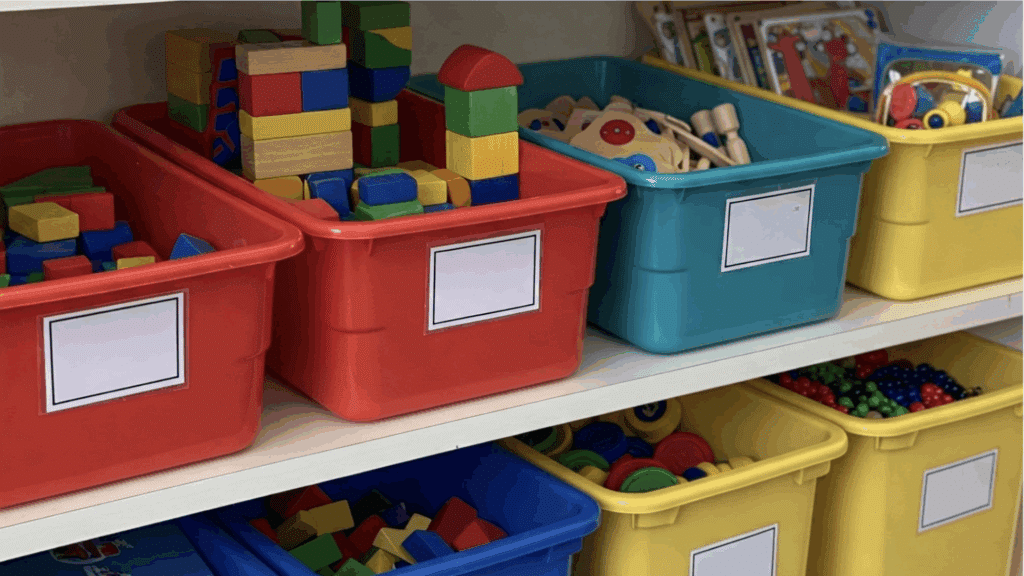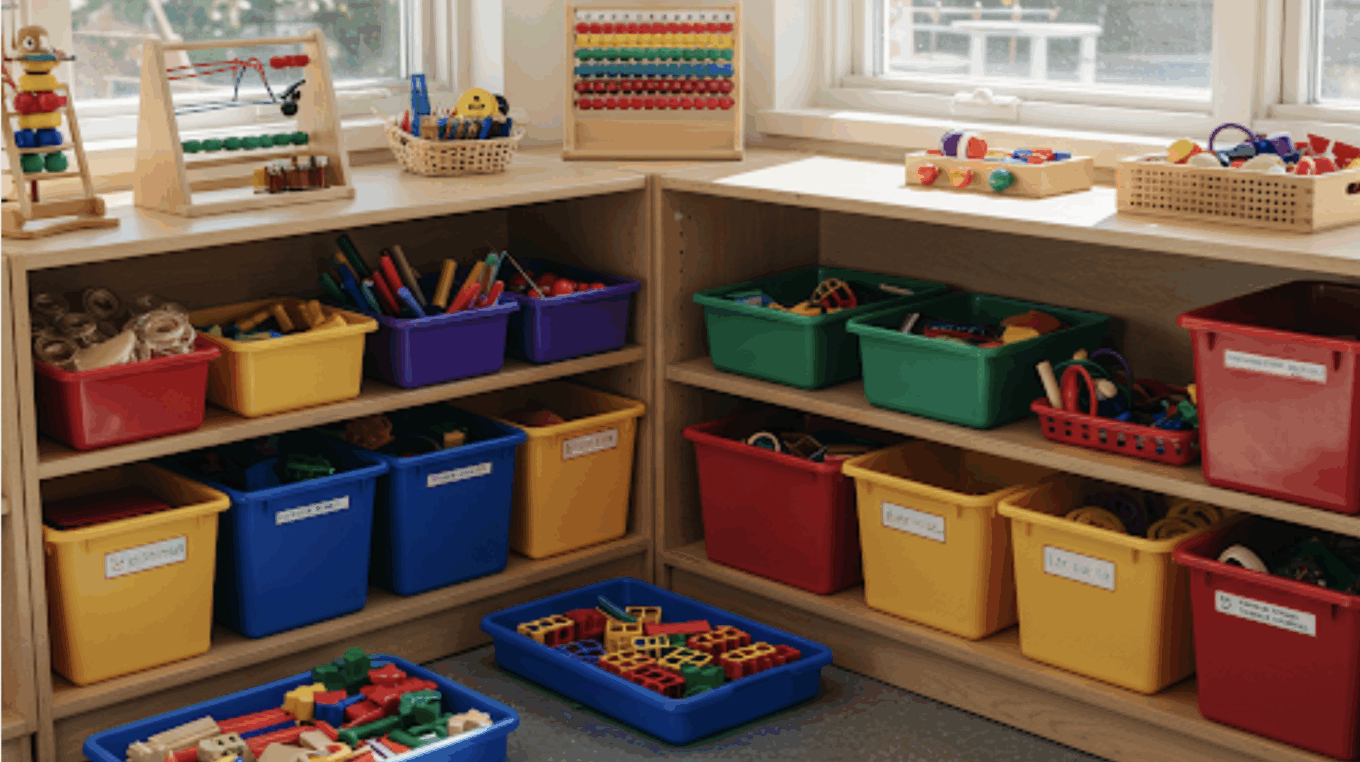Teachers struggle to capture students’ attention during the first minutes of class. Many lose valuable teaching time to morning chaos while students settle in.
Morning bins offer a practical solution that turns this challenge into a learning opportunity. Students who start with focused activities show better attention spans and academic performance.
This blog shows how to set up effective morning tubes and turn those critical first minutes into productive learning time.
What are Morning Bins and Why do They Matter?
Morning bins are containers filled with learning materials that students use during the first 10-15 minutes of class. They create a smooth start to learning while teachers handle attendance and other tasks.
These bins do more than keeping students busy – they build important skills for the school day.
- Students learn to work independently
- Classrooms become calmer with fewer disruptions
- Teachers gain time for individual check-ins
- Key skills are developed through hands-on activities
Teachers prepare bins before students arrive. Each contains clear instructions and all needed materials. The best morning work bins match class needs and change regularly to keep the routine fresh.
Setting Up Morning Bins: Practical Tips and Ideas

Setting up these bins requires thoughtful planning and organization. Teachers need to consider the age group, skill levels, and classroom layout when creating their bin system.
The right setup helps students quickly settle into productive morning routines and builds independence.
1. Clear labeling: Teachers should mark each bin with simple numbers, colors, or pictures for easy identification. This way, students can quickly find their assigned bin and know exactly where to return it when they are finished with the activity.
2. Rotation system: Creating a chart that shows which students use which bins each day keeps the process fair and organized. This system ensures all students get to experience different activities throughout the week and prevents arguments over popular bins.
3. Visual instructions: Including picture guides or simple written steps helps students work independently without asking for help. Teachers find that laminated instruction cards last longer and can be used throughout the school year.
4. Mixed skill levels: Each morning bin should contain options for students at different ability levels working on the same concept. Teachers might include number cards for beginners and more complex math problems for advanced students in the same math bin.
5. Strategic placement: Placing bins in an accessible area away from high-traffic zones helps reduce classroom congestion. Students learn to collect their bins smoothly and find a workspace without bumping into classmates or creating bottlenecks.
Must-Have Tools for Morning Task Boxes

Stocking morning task boxes with the right tools makes all the difference in student engagement and learning.
Teachers should select items that are durable, age-appropriate, and support multiple learning styles. The best tools can be used across different activities and throughout the school year.
When choosing items for morning task boxes, teachers should consider both versatility and storage needs. Tools that serve multiple purposes save space and money while keeping students interested longer.
- Small whiteboards with dry-erase markers
- Colorful counters for math activities
- Letter tiles for word building
- Task cards with clear instructions
- Timers for student pacing
How Morning Activity Bins Support Classroom Management

Teachers often struggle with the transition from student arrival to focused learning time.
Students know exactly what to do when they enter the room, creating a calm start that carries throughout the day. This simple management tool evolves potentially chaotic minutes into productive learning opportunities.
1. Reducing Morning Chaos
The first minutes of the school day often set the tone for everything that follows. Morning task boxes give students a clear task to focus on as soon as they enter the classroom.
This immediate engagement cuts down on wandering, chatting, and other behaviors that can spiral into classroom disruptions.
2. Building Student Independence
Morning task boxes teach students to start work without constant teacher direction. They learn to read instructions, gather needed materials, and solve problems on their own.
This growing independence frees teachers from micromanaging every moment and helps students develop crucial self-management skills.
3. Creating Consistent Routines
Students thrive when they know what to expect each day. Morning activity bins establish a predictable rhythm that helps even the most scattered students settle in quickly.
The consistency builds security and reduces anxiety about what comes next.
4. Allowing for Teacher Check-ins
While students work on their morning bin activities, teachers gain valuable time for individual connections.
They can take attendance, check homework, or have brief conversations with students who need extra attention. These small moments build relationships that lead to better classroom behavior throughout the day.
5. Managing Transitions Effectively
Moving from arrival time to formal instruction can be a tough transition for many students. Morning tubes create a buffer zone that eases this shift.
Students gradually move from independent work to whole-class focus, making the transition smoother and less jarring.
Morning Bins or Tubs: What’s the Difference?
| Aspect | Morning Bins | Tubs |
|---|---|---|
| Size | Typically smaller and more compact, designed to fit on student desks or in small storage areas. | Usually larger with more capacity, often placed on shelves or in central classroom locations. |
| Mobility | Lightweight and portable, students can carry them to their workspace easily. | Heavier and less portable, they generally stay in one spot where students come to them. |
| Organization | Often feature dividers or compartments to keep small items sorted and visible. | More open space without internal dividers, better for larger materials or books. |
| Usage | Perfect for individual activities lasting 10-15 minutes at the start of the day. | Better suited for group activities or storing themed units that change with the curriculum. |
| Storage | Stack neatly when not in use, taking up less classroom space. | More bulky for storage, but it offers better protection for fragile materials. |
Summing It Up
Morning bin eases those hectic first minutes of class into focused learning time.
By creating this simple system, teachers gain valuable moments for individual check-ins while students develop independence.
The small investment in planning and materials yields big returns in classroom management and skill-building.
Students quickly settle into productive routines that set a positive tone for the entire day. Classrooms that implement morning bins experience smoother transitions and more effective learning environments.




